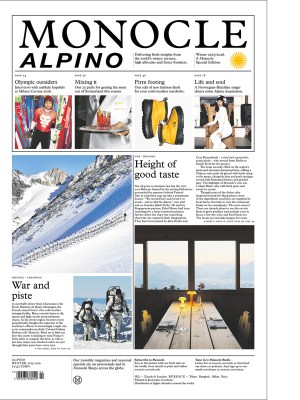Yes, a punnet of premium Japanese fruits is worth the price – every yen of it
Few gifts are as welcome to this resident of Japan as the delivery of a green box marked “Sembikiya”. For those who don’t know, Sembikiya is the ultimate Tokyo fruit shop. Founded in 1834, it sells the most premium examples of whatever is in season in Japan – this means that in late July my fruit bowl is filled with the juiciest Yamanashi peaches, musk melons from Shizuoka and silky Miyazaki mangoes. When I popped in the other day, the staff were busy boxing up trays of sweet Shinku grapes and whole Nagano watermelons, ready to ship them out to some lucky recipient. Stories in Western media about expensive Japanese fruits are perennial favourites, particularly now that some importers are making inroads into overseas markets. Most run with headlines such as, “I tried the £15 ‘Ferrari of apples’ – was it worth it?” or “Would you pay $19 for a strawberry?”. Talk about missing the point.

Comparing a peach grown so carefully that it’s wrapped on the tree to the tasteless turnips that pass for summer produce in supermarkets is unfair. These Japanese fruits are celebrated for their exquisiteness, designed to be eaten one by one, not chopped up and tossed in a fruit salad. Many of us are so detached from seasonality (and the real cost of such skilled, time-consuming agricultural labour) that we don’t understand the ambition to achieve fruit nirvana. Not so in Japan. At Sembikiya, fruit perfection doesn’t come cheap and nor should it. A single top grade “Taiyo no Tamago” (“Egg of the Sun”) mango – a rarity from Miyazaki, famed for its exceptional sweetness and vibrant red skin – will set you back as much as 20,000 yen (€116). There are, of course, cheaper fruits on sale here but if you want to try the best – as this particular mango is – then that’s the going price. Japanese customers need no convincing and nor do their neighbours. Yamanashi, one of the prefectures best known for what is now labelled “luxury” fruit, announced in 2022 that the overseas fruit export value of its bounty had surpassed 2 billion yen (€11.6m) for the first time and more than doubled since 2019. Of the 1,000 tonnes of fruit exported from Yamanashi, 90 per cent is headed to Hong Kong and Taiwan.
On a boiling public holiday at Sembikiya’s main shop in Nihonbashi this week, 200 people patiently waited in line for the upstairs fruit salon to open. At 11.00 sharp, the first lucky customers were ushered into the air-conditioned dining room to be served by a team of waiters in bow ties and waistcoats. There are many fruity wonders on the menu here: most customers seem to have come for the parfait, a cream and sorbet concoction made with pieces of the ripest seasonal produce; others for the fruit sandwiches. I would recommend a simple, revelatory plate of sliced premium fruits accompanied by a refreshing summer drink made with fresh lemons, sweet peaches, soda water and plenty of crushed ice. As I said, perfection.
Fiona Wilson is Monocle’s Tokyo bureau chief. Heading for the Japanese capital? You’ll need our City Guide.



